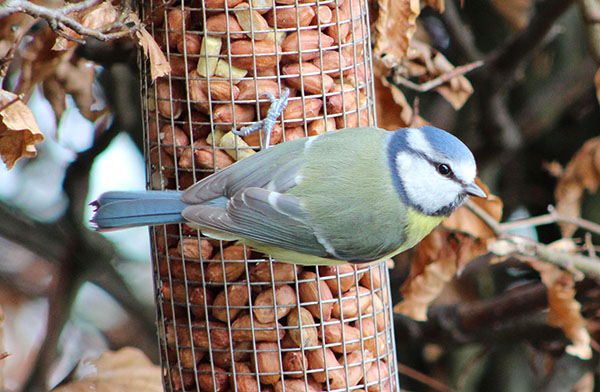You can do anything for 15 minutes … including gardening. Here are the jobs that I’m focusing on in March, and a #15greenmins checklist that you can print out – or make your own list that suits your garden.
In the flower garden
‘Spring clean’ your borders
As your perennials and ornamental grasses begin to re-emerge, cut back dead foliage, remove weeds and mulch. If you turn a blind eye to ground elder, creeping buttercup, couch grass or nettles now, you’ll regret it later!
Try not to overwork the soil (leave it as undisturbed as possible), but apply a generous layer of garden compost or well-rotted manure on top to add nutrients and improve water retention.
To avoid a back-breaking session, choose your job (cutting, weeding or mulching) and tackle your borders 15 minutes at a time.
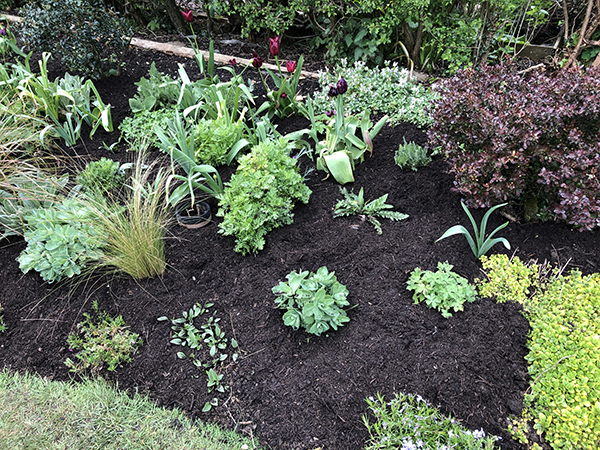
Prop up your perennials
Put herbaceous supports in as you tidy, so that your plants will grow through them. It’s a lot easier to do it now than after the plants have grown.
Protect young spring shoots from slugs and snails
Try nematode control or wool pellets for slugs; add copper rings around the tops of pots. I’ve also found crushed-up egg shells help around emerging hostas (but others say it doesn’t work).
Sprinkle granular fertilizer around clumps of spring bulbs
Apply a general-purpose fertiliser such as Growmore (35 grams per square metre) to borders to encourage bulbs to flower well. Use a liquid high-potassium feed (e.g. tomato fertilizer) in containers.
Cut back Dogwood and Buddleia – hard
A hard prune to the base of woody Buddleia will produce vigorous growth for those summer displays. Also cut back dogwood (Cornus) stems at the end of the month (just before the leaves emerge) for spectacular new red stems for next winter.
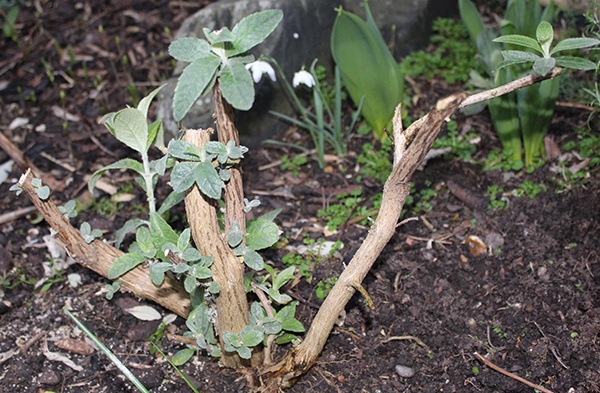
Plant snowdrops in the green
Snowdrops tend to do better if they are planted when still in leaf rather than as a dry bulb. Plant snowdrops ‘in the green’ now for a winter display next year. Lift and divide existing clumps when the flowers have died back to make more of these beautiful flowers for next year.
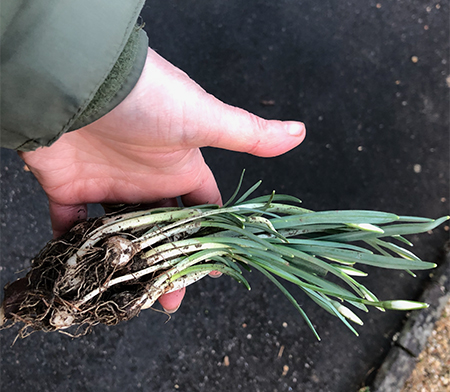
Prune summer-flowering shrubs and climbers
Use sharp secateurs to cut back Hydrangea paniculata, Buddleia, summer-flowering Clematis, Wisteria and rose bushes before the sap starts rising and Spring growth appears. As well as reshaping, remove any damaged or diseased wood and crossing or rubbing stems.
For Hydrangea paniculata, prune weak stems to the ground and cut back spent flowers and stems by up to a third of last season’s growth. Poor or neglected plants can be renovated by cutting all the stems back to the base. You won’t get any flowers this summer but new stems will bloom next year. Leave pruning of climbing hydrangeas until after they flower in the summer.
For summer-flowering Clematis, cut a few inches from the ground above a low pair of buds.
Tie in climbers
Space out and secure the stems of climbers to supports as they grow. Heavier and woodier stems will require stronger ties, but avoid using wire or metal ties, as they will cut into the stems as they thicken.
Check pots for vine weevil larvae
Vine weevil are a common pest on a wide range of plants, but the larvae are a particular problem for potted Begonia, Cyclamen, Fuschia, Heuchera, Polyanthus, Primula, Strawberry and Saxifrage. They eat the plant’s roots. If you notice signs of wilting in otherwise well-watered plants, check the root ball for vine weevil larvae.
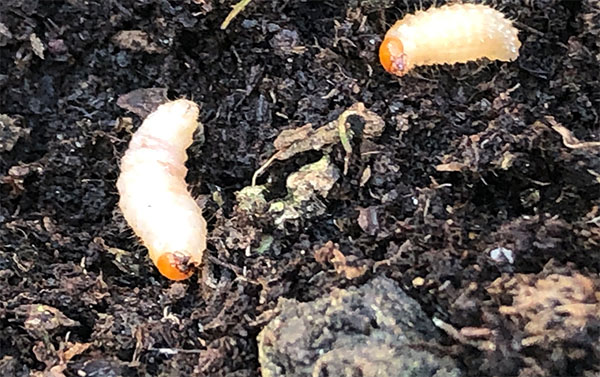
Top dress containers with fresh compost
If you are not repotting, then remove about 5 cm (2 inches) of the old compost from the top of the pot and replace with fresh compost.
Plant Dahlia tubers
Pot up over-wintered Dahlia tubers. Water well and protect them from frost. Check regularly for slugs and snails (they love ’em!).
Sow flower seeds
Plan what you want to grow this summer and start sowing indoors now for planting out in June. Check the packets for best sowing times. I’m sowing a selection of favourite perennials this month, including Rudbeckia, Verbena bonariensis, Aster and Gaillardia.
Pot up over-wintered cuttings and plug plants
Pot on rooted cuttings of tender perennials taken last year and over-wintered, or plug plants.
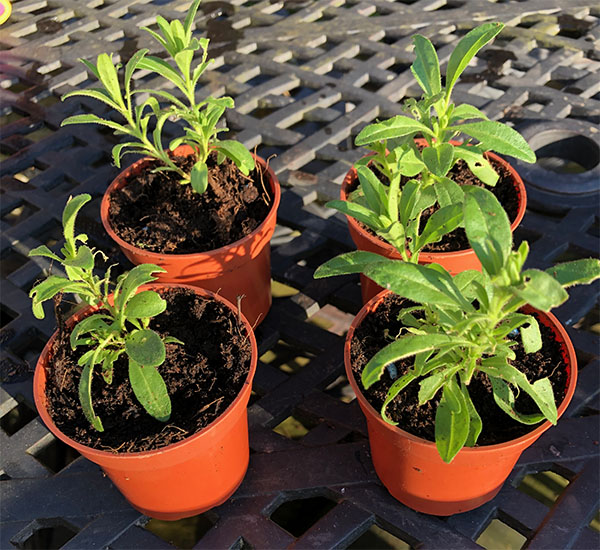
In the vegetable garden
Prepare vegetable seed beds
Remove weeds and top up raised beds with garden compost and/or well-rotted manure.
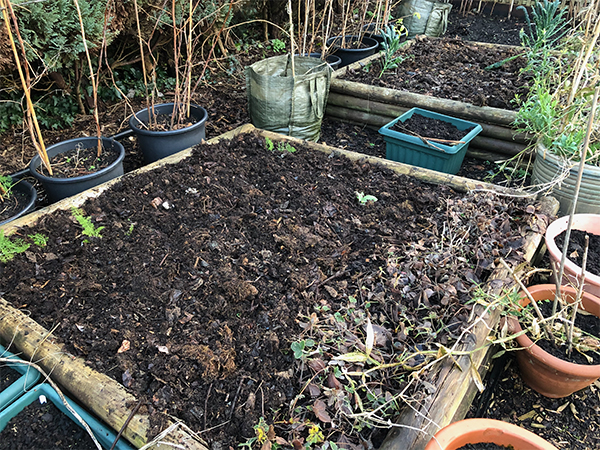
Sow vegetable seeds
Plan what you want to grow this year and start sowing tender vegetables indoors. Check the packets for best sowing times. I’m sowing, tomatoes, chillis and aubergines indoors this month.
In the fruit garden
Cut back autumn-fruiting raspberry canes
If, like me, you haven’t done this yet, don’t delay! Cut autumn-fruiting rasberry canes to the ground to stimulate new canes. You can also cut the tips of summer-fruiting raspberry canes now, just above a bud, if they have grown above your supports. This is also the time to plant new raspberry canes and blackberries.
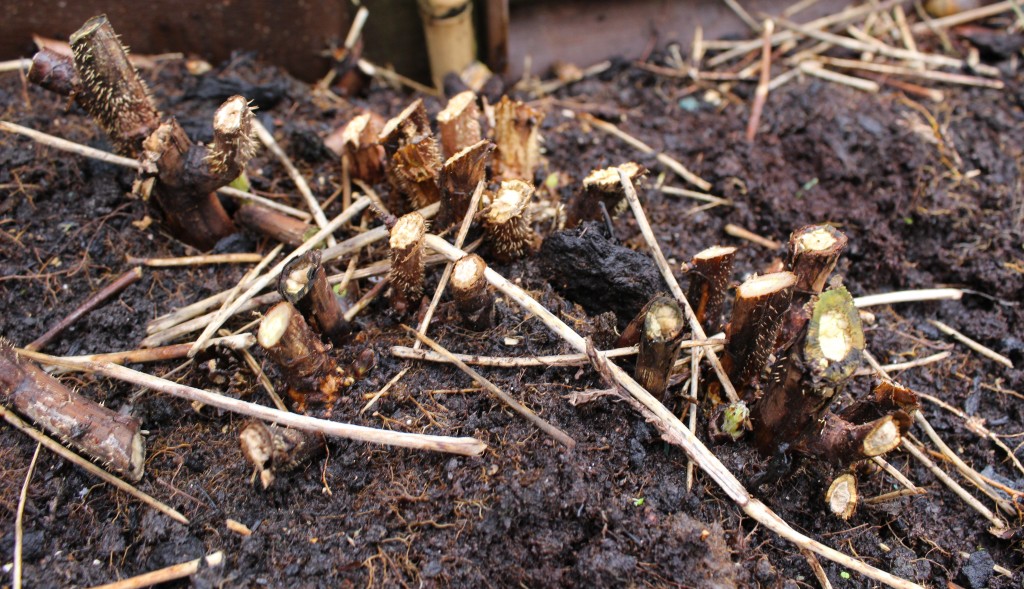
Feed fruit trees and rhubarb
Mulch fruit trees with well-rotted manure or garden compost, but be careful not to mound the manure up around the trunk. Sprinkle a handful of potash fertilizer around the base too. Mulch rhubarb with a thick layer of well-rotted manure or garden compost but do not cover the crown. Now is also the time to plant new fruit trees and split rhubarb crowns.
Protect soft fruit blossoms
Cover soft fruit trees (peach, nectarine, apricot etc.) with fleece if frost is forecast
Other jobs
Lawn care
If your lawn has already started to get going then now is the time for an early first cut. Wait for a dry day and set the blades on your mower high. Cut the lawn edges if they’ve become overgrown. Now is also the perfect time to give your lawn some TLC: rake out moss and aerate it, apply a Spring feed, repair edges, and re-seed bare patches.
Ventilate greenhouses and cold frames
On warmer days open up the greenhouse and cold frame to prevent build up of mildew and other nasties.
Scrub or pressure wash the patio
Get rid of those slimey patches on patios and paths either by scrubbing with a broom and some soapy water, or blasting with a pressure washer. Be careful you don’t blast all your grouting out as well!
Start feeding fish
If the water temperature is over 4 degrees C then you can start feeding wheatgerm pellets now, but you need to wait until the water is over 10 degrees before giving them the ‘good stuff’ – for more information see Fish feeding tips. Note: if you want to encourage a greater variety of wildlife to your pond, don’t introduce fish!
Keep feeding the birds
Although the temperatures may be starting to climb, we’re still getting plenty of chilly weather and birds are expending even more energy as they pair up and build nests. So top up the bird tables and feeders.
